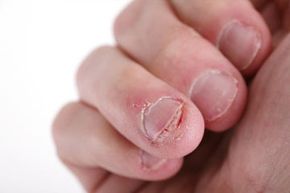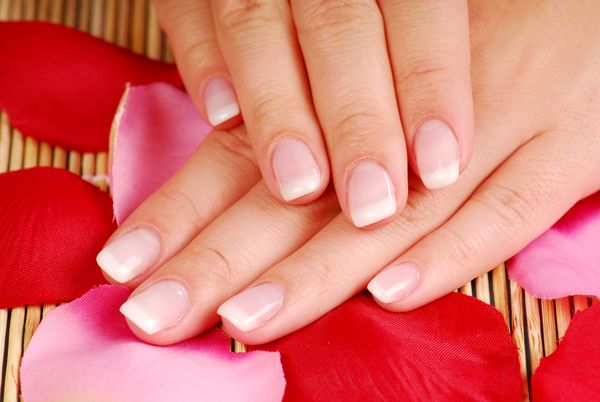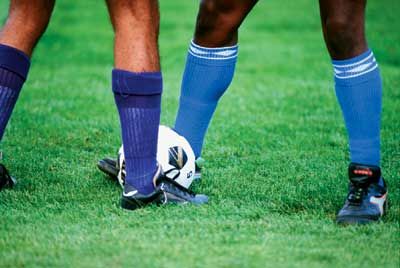It can happen so quickly: You snag your nail on the car door, you stub your toe, or you absent-mindedly chip away at your nail polish, and suddenly you're left with a torn nail -- in severe cases, you could even separate a nail from your nail bed. Many things can cause painful torn or separated nails, but those nails will heal if you take the proper steps.
To understand how your nail tears, it helps to know what a nail is. Nails -- on fingers or toes -- are composed of a nail bed and a nail plate. The nail bed is the soft area of skin beneath the nail plate, which is the hard surface of the nail. Cells at the bottom of the nail bed make up the nail matrix and produce layers of a protein called keratin -- keratin builds the nail plate and anchors it to the nail bed. When your nail tears or separates, the nail matrix grows the new nail [source: Mayo Clinic].
Advertisement
The ways you can tear your nail plate are endless, but the most common way people tear their nails is by trimming them incorrectly -- they cut their nails at the wrong angle, leaving a tear or hangnail [source: Bruno]. Your nail plate can also separate from your nail bed if it's slammed between two things, such as a door and a doorframe, or if you have a condition that causes it to fall off, such as a fungal infection. Nails may also be more prone to breakage if you have nail psoriasis, if you use chemicals like acetone to remove nail polish or if you take certain medications or are undergoing chemotherapy [source: Van Houten].
Both nail tearing and nail separation can be painful, and they don't heal quickly -- you have to wait for them to grow back. But there are a few simple steps you can take to help the nail grow back and to prevent tearing and separating your nails in the future. Read on to learn what you can do to help heal your torn or separated nail.
Advertisement


